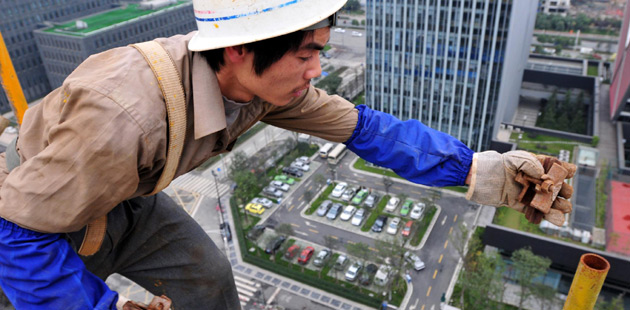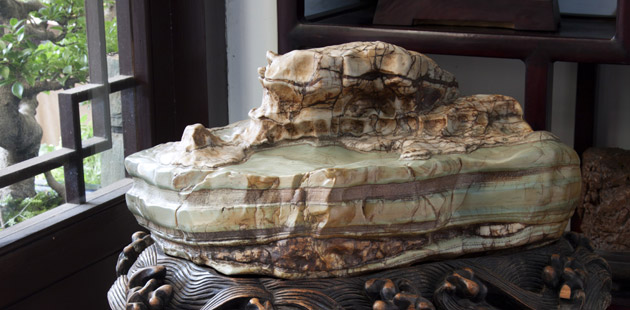Professionalism, craftsmanship are necessary
Updated: 2011-12-09 15:00
By Xing Yuqing (China Daily)
|
|||||||||||
Reading trade statistics, everyone should be very impressed with China's tremendous achievements in the decade since it joined the WTO. Despite the fragile recovery of the global economy, in 2010 China's exports surged 31 percent to reach $1.6 trillion, more than six times the amount in 2000. For the first time, China overtook Germany as the No 1 exporter in the world.
Its high-tech exports were valued at $490 billion and accounted for 31 percent of its total exports. A report from the Organization for Economic Co-operation and Development (OECD) concluded that China surpassed the United States, Japan and the European Union to emerge as the world's largest high-tech exporter.
Further, according to statistics from the US Department of Commerce, China surprisingly ran $90 billion of surplus in advanced technology products against the US, an undisputed world leader in technology innovations.
Is China really the No 1 high-tech exporter in the world? The answer is definitely no. The trade statistics cited above are misleading, and too simple to give a true picture of modern international trade, which has been shaped by sophisticated global supply chains beyond our imagination.
As a matter of fact, more than half of China's exports belong to "processing exports" - products made of imported parts and components, which undoubtedly inflate the export volume. Most of these products are sold not under Chinese but foreign brands - a critical factor for made-in-China products occupying the world market.
Moreover, 82 percent of "high-tech" exports are actually assembled with imported key parts and components and have very few indigenous intellectual properties. It is deceptive to classify these assembled products as high-tech exports, as Chinese workers contributed only low-skill labor rather than technology. These exports should be called "assembled high-tech", and classified into the same category as traditional labor-intensive products, such as T-shirts, shoes and toys.
The iPhone is a typical example. All iPhones are assembled in China. Whenever an iPhone is shipped abroad, China is credited with $180 worth of high-tech exports, although Chinese workers simply screwed all imported parts together and added merely $6.5 to the value of each iPhone.
Laptops represent the single largest item in China's high-tech exports, valued at $55 billion; 99 percent of laptops available in the world are assembled in China. However, US companies own the intellectual property of both the CPUs and the operating systems.
After more than three decades of rapid economic growth, Chinese industries still remain at the bottom of the smile curve. None of the Chinese brands has secured a spot in the top 100 global brands. Numerous factors obstruct Chinese firms from advancing higher on the global supply chains. What should be changed first is the mindset and business philosophy of Chinese entrepreneurs.
Many Chinese firms have been very successful in copying and imitating foreign products and designs. Thanks to huge resources of low-cost labor, Chinese companies can make cheaper products, but unfortunately not ones of better quality than competitors in advanced countries. That is why Chinese tourists going to Japan always look for electronic products that are made there.
Switching from a "me too and cheaper" to a "me too and better" strategy is essential to prevent Chinese firms from being locked at the bottom of the smile curve.
Achieving "me too and better" requires nurturing craftsmanship and professionalism among Chinese workers.
Martin Luther King gave the best definition of craftsmanship and professionalism: "If a man is called to be a street sweeper, he should sweep streets even as Michelangelo painted or Beethoven composed music or Shakespeare wrote poetry."
I see Japanese floor sweepers every day in my office building. Their dedication to the work provides vivid footnotes to the high quality of Japanese products.
Everyone agrees that technology innovations, newly designed products and globally recognized brands would bring Chinese firms one rung higher on global supply chains. To achieve any of these requires a long-term business philosophy.
Myopia, such as only focusing on short-term profitability and being impatient about long-term success, could undermine endeavors to create new products. Any Chinese firms serious about technology innovations and trying to be unique and the best, instead of the cheapest, should reorient their business objectives from the short-term to the long-term horizon, thus providing the best environment for innovative explorations.
The author is director of Capacity Building and Training, Asian Development Bank Institute, and professor of economics, National Graduate Institute for Policy Studies, Tokyo. The opinions do not necessarily reflect those of China Daily.








